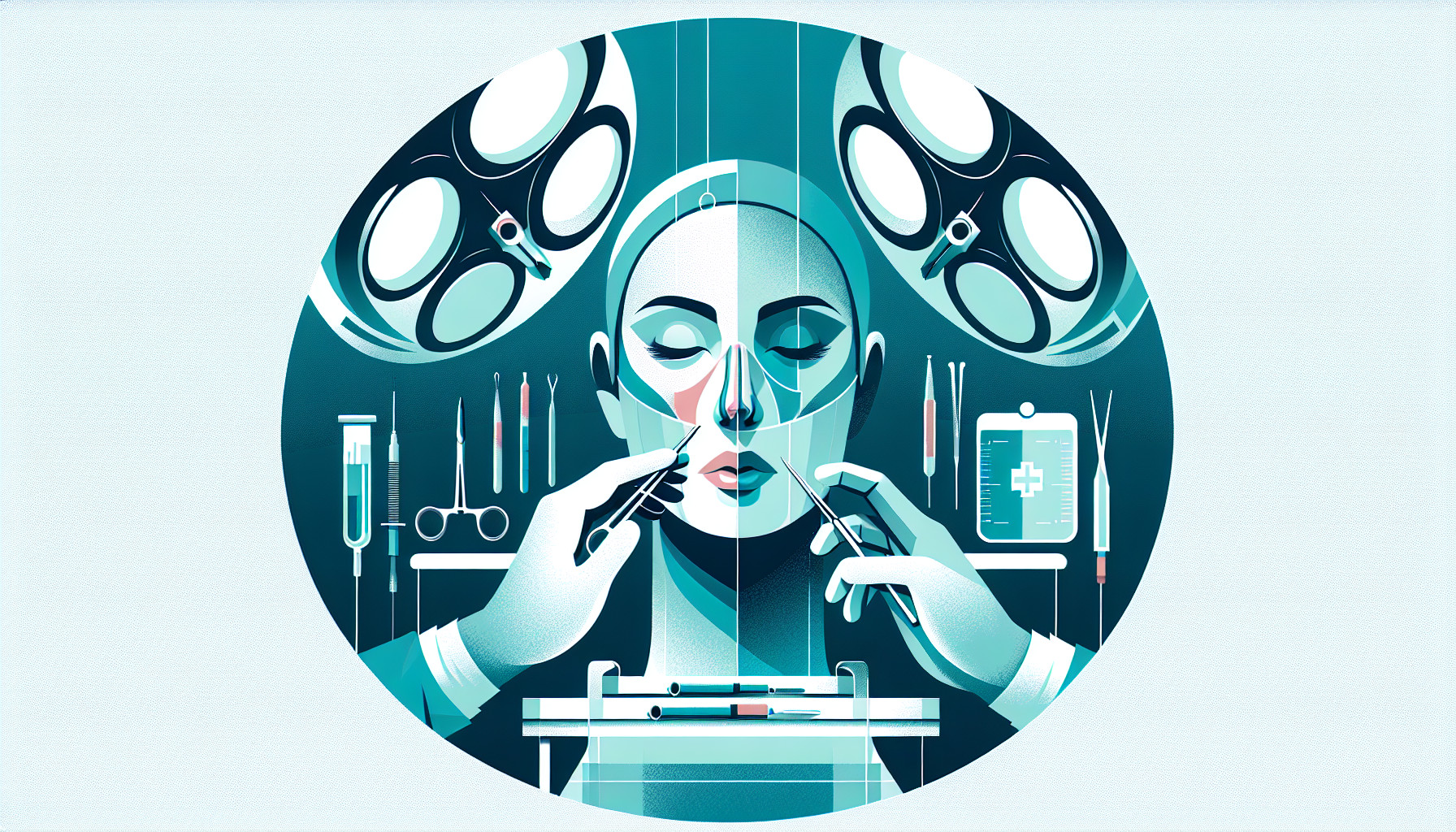Our Summary
This research paper discusses the unique aspects of performing nose reshaping surgery (rhinoplasty) on men. The authors emphasize the need for careful preparation before the surgery and clear communication with the patient, especially because men may not pay as much attention to the details. It’s also crucial to check for any mental health issues that could affect the patient’s experience. The paper discusses various techniques used in male rhinoplasty, highlighting the importance of preserving masculine facial features and not making the nose look too feminine or overly altered. Proper skin care following the surgery is also emphasized as a key part of the process.
FAQs
- Why is preoperative planning crucial for male rhinoplasty?
- What are the key components in a male rhinoplasty case?
- Why is it important to screen patients for psychosocial disorders before a male rhinoplasty procedure?
Doctor’s Tip
One helpful tip a doctor might tell a patient about rhinoplasty is to follow postoperative care instructions carefully. This can include avoiding activities that could put strain on the nose, keeping the area clean and protected, and attending follow-up appointments as scheduled. Proper postoperative care can help ensure optimal healing and results from the surgery.
Suitable For
Male rhinoplasty patients typically include those who are seeking to improve the appearance of their nose for aesthetic reasons, such as reducing a prominent hump, refining a bulbous tip, or straightening a crooked nose. They may also include patients who have functional issues, such as difficulty breathing due to a deviated septum or other nasal obstruction.
It is important for the surgeon to carefully evaluate each patient’s individual goals and expectations for the surgery, as well as their overall health and any underlying psychological issues. Patients with unrealistic expectations or body dysmorphic disorder may not be good candidates for rhinoplasty.
Overall, the best candidates for rhinoplasty are those who are in good physical and emotional health, have realistic expectations for the outcome of the surgery, and are motivated to follow postoperative care instructions to ensure optimal results.
Timeline
Before rhinoplasty:
- Initial consultation with a plastic surgeon to discuss goals and expectations
- Physical examination to assess the nose and facial structure
- Preoperative planning, including discussing potential risks and complications
- Required blood tests and other medical evaluations
- Consent forms signed
- Preoperative instructions given, including medication guidelines and fasting requirements
After rhinoplasty:
- Surgery performed under anesthesia
- Recovery period, including swelling, bruising, and discomfort
- Follow-up appointments with the surgeon to monitor healing progress
- Potential complications, such as infection or scarring, addressed
- Gradual return to normal activities, avoiding strenuous exercise and heavy lifting
- Final results evident after several months as swelling subsides
- Continued follow-up care to ensure optimal results and address any concerns.
What to Ask Your Doctor
- Am I a good candidate for rhinoplasty?
- What are the potential risks and complications associated with rhinoplasty?
- What results can I realistically expect from rhinoplasty?
- How long is the recovery period and what should I expect during the healing process?
- Can you show me before and after photos of previous rhinoplasty patients you have treated?
- What techniques do you use for male rhinoplasty specifically?
- How many male rhinoplasty procedures have you performed?
- Can you explain the specific changes you recommend for my nose?
- What type of anesthesia will be used during the procedure?
- Are there any alternative treatments or procedures that may be more suitable for me?
Reference
Authors: Rohrich RJ, Mohan R. Journal: Plast Reconstr Surg. 2020 Apr;145(4):744e-753e. doi: 10.1097/PRS.0000000000006835. PMID: 32221209
